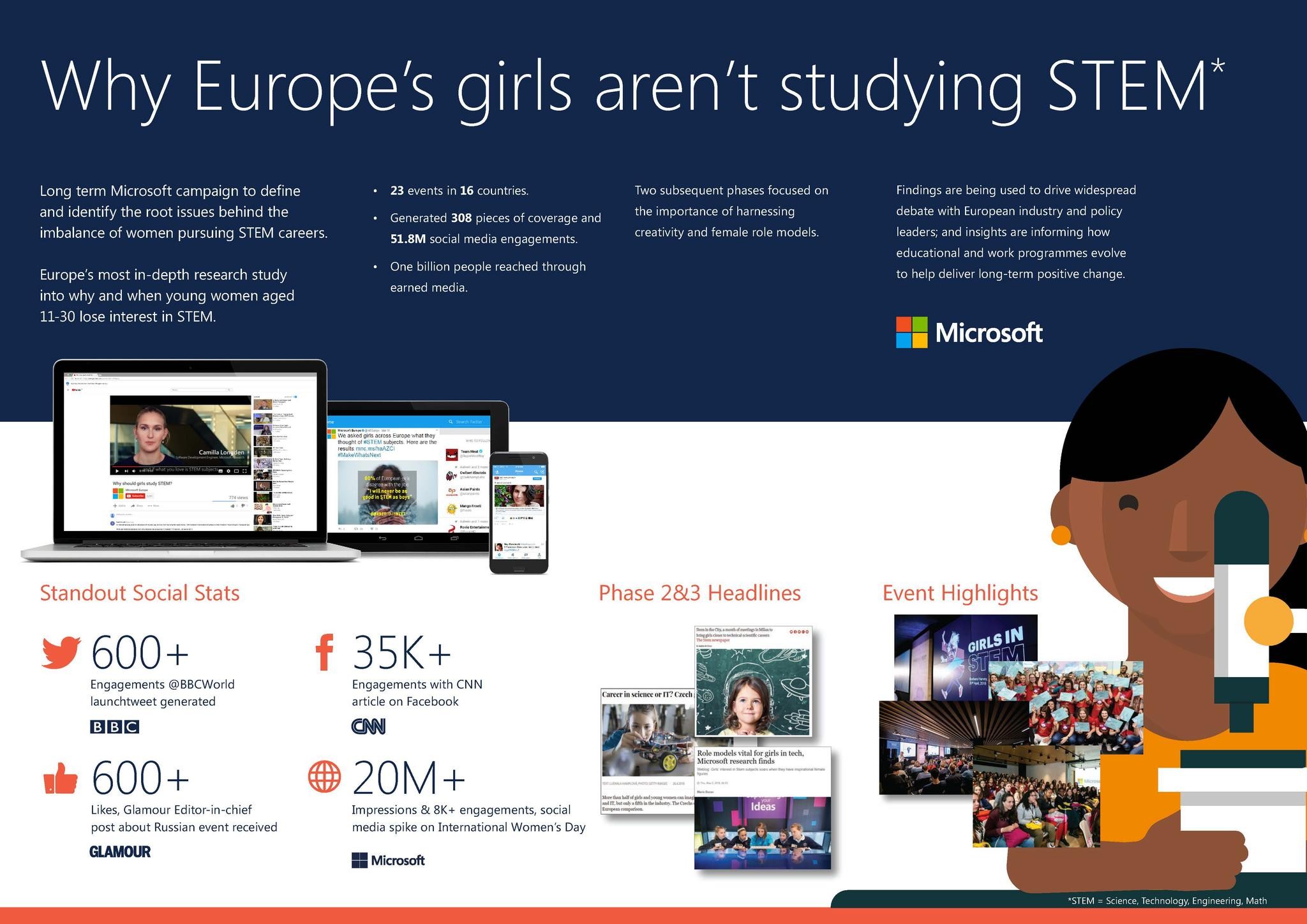Eurobest
Girls In STEM
CREATION, London / MICROSOFT EUROPE / 2018

Overview
Entries
Credits
OVERVIEW
Strategy
To catalyse action and engage critical stakeholder communities, we set out to squeeze the pips from our study through three distinct phases of PR and marketing support. Findings were published in two separate whitepapers with actionable recommendations aimed at policymakers, educators and business leaders. A pan-regional integrated communications campaign leveraged earned, owned, social and digital channels for launch activity in 12 European countries. Phase two provoked further debate by bringing to the fore the need for greater creativity in STEM education in addressing the skills gap among young women; and a high profile speaker event in Brussels and local support in 19 other countries for our third phase highlighted the importance of female role models in inspiring long term STEM engagement by young women. Through careful phasing, we have maintained dialogue and built significant momentum.
Execution
Phase One (December 2016 to May 2017) saw the findings published in a detailed whitepaper with actionable recommendations for policy makers, educator and business leaders. A pan-European integrated communications campaign made use of customized content and story angles for local context and delivered 23 in-market events.
Phase Two (October 2017), saw our second whitepaper published, this time looking into the critical role of harnessing creativity in attracting more young women to engage with STEM, opening the door to debate around how to better teach STEM subjects to girls at critical age points.
Most recently, we highlighted the importance of female role models. A Microsoft-hosted event (“Changing the Face of STEM”) in Brussels in April 2018, brought together educators, policymakers and NGOs and female entrepreneurs; and across Europe, 26 events in 19 countries engaged students, teachers, policy makers and members of the wider developer and business community to continue the debate.
Outcome
Through phase 1, we reached over one billion people through earned media across Europe, including major international titles such as the FT, CNN and BBC. The CNN article was shared over 13,000 times on Facebook.
We presented to UNESCO, the Council of Europe and EU Code Week Ambassadors (among others), and politicians in Ireland, Belgium, Czech Republic, France, Germany, Latvia, Poland, Russia and Slovakia used the findings to inform discussion according to each country’s education priorities.
Live-tweeting of the Changing the Face of STEM event saw #makewhatsnext trend in Brussels, and although earned was not a key objective, generated headlines such as “Role models vital for girls in tech, Microsoft research finds” (Irish Times). The real success though came from facilitating top level discussions with action groups that otherwise wouldn’t have been brought together to the table.
This campaign continues to inform our programs and investments, opening the door to a brighter, more innovative future for young women in the technology industry. As an example, we are now tailoring programs in partnership with non-profits in Europe, including modifying training camps and mentoring sessions for girls in more than 15 countries to increase their impact.
The findings have certainly been the proof needed for government departments, agencies and their partners to start formulating policies – but the most humbling of all are the conversations we have had with thousands of girls who tell us they feel truly excited about the opportunities that studying STEM could open for them.